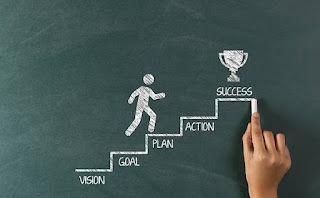First Jhana Experience: My Journey to Deep Concentration and Mindful Meditation
Introduction to the First Jhana: My Personal Journey into Deep Concentration
Meditation has been a significant part of my life for many years, offering a pathway to inner peace, clarity, and self-awareness. Over time, my meditation practice has deepened, leading me to explore various techniques and states of consciousness. One of the most profound aspects of meditation I’ve encountered is the concept of Jhanas—states of deep concentration and bliss that arise from sustained focus.
In this article, I will share my first experience of entering the first Jhana, a pivotal moment in my meditation journey. This experience not only deepened my understanding of concentration but also provided a glimpse into the profound stillness and spiritual joy that can arise from focused awareness. My hope is that by sharing this personal account, others may find inspiration and guidance in their own meditation practices. The profound effects of meditation on mental and physical health are well-documented, with studies from the National Institutes of Health highlighting its potential to enhance well-being and cognitive function
How to Set Intentions for Achieving Deep Meditation and First Jhana
Before diving into the actual experience of the first Jhana, it’s essential to set the stage by discussing the importance of intention in meditation. For this particular session, I approached my practice with a clear and focused intention: to explore deeper states of concentration and to allow myself to be fully present in the moment, without any attachment to outcomes. This mindset was crucial, as it set the tone for the entire session and allowed me to approach the practice with a sense of openness and curiosity.
I began by dedicating the session to this purpose, reminding myself that the goal wasn’t to “achieve” anything but to observe and experience whatever arose. This subtle shift in perspective helped to alleviate any pressure or expectation, allowing the meditation to unfold naturally.
Grounding in Mindful Breathing
As I settled into my meditation, I began by grounding myself through mindful breathing. I focused on the sensation of the breath entering and leaving my nostrils, using this as my primary object of concentration. The simplicity of this practice helped to anchor my mind, drawing my attention away from external distractions and internal chatter.
In the beginning, my mind was. Thoughts about the day, my to-do list, and random memories floated to the surface. I gently acknowledged each thought without judgment, allowing them to pass by like clouds in the sky. This part of the meditation required patience and persistence, as my mind naturally wanted to wander. But each time I noticed my focus slipping, I calmly brought it back to the breath.
Over time, I noticed that my mind began to settle. The gaps between thoughts grew longer, and a sense of calm started to emerge. I could feel myself entering a state of deeper concentration, where the distractions of the outside world seemed to fade into the background. This shift marked the transition from the initial stages of meditation into a more profound state of awareness, setting the stage for the deeper experiences that were to come.
My Initial Attempts at Jhana Meditation and Concentration
As I continued to focus on my breath, there came a moment when my mind became noticeably more still. The usual mental noise had quieted down, and I felt a clear, sustained focus on the sensation of the breath. This was my first encounter with what is often referred to as “access concentration.”
In this state, the distractions that typically pulled my attention away were no longer as potent. My mind felt more unified, and I was able to stay with my meditation object, the breath, without the usual effort. It was as if my awareness had narrowed, and the outside world had faded, leaving me in a calm, centered place.
This shift was subtle, but it felt significant. I could sense that I was on the threshold of a deeper meditative state, where the mind’s habitual restlessness was replaced by a sense of stability. The experience was calming, and yet there was also a gentle alertness—a readiness to move even deeper into the meditation.
It’s important to note that achieving access concentration didn’t happen instantly. It took time and practice, and there were moments when I’d slip back into distraction. But each time, I gently returned to my breath, and gradually, this state became easier to reach. This stage was crucial for setting the foundation for the even deeper states of meditation that I was about to explore.
As I remained in access concentration, something extraordinary began to happen. The breath, which had been my anchor, started to fade into the background, and a sense of joy and rapture began to emerge. This was unlike anything I had experienced before—an intense, almost euphoric feeling that seemed to fill my entire being.
The joy wasn’t tied to anything external; it was a pure, internal bliss that arose simply from being deeply present. My body felt incredibly light, almost as if it were dissolving into the experience itself. There was a profound sense of unity between my mind and the object of meditation, as if they had become one.
At this point, I realized that I had entered the first Jhana. This state was characterized by intense rapture and joy, accompanied by a one-pointed focus on the meditation object. It was a deeply immersive experience, where the usual mental chatter was completely absent, replaced by a serene, yet powerful, concentration.
The first Jhana is often described as a state of ‘joy born of seclusion,’ and that description resonated deeply with me. The joy wasn’t like ordinary happiness—it was far more profound, a kind of spiritual joy that felt both peaceful and exhilarating.
However, maintaining this state required a delicate balance. There was a subtle awareness that if I tried too hard to hold onto the joy, it would slip away. So, I let myself fully experience it without clinging, allowing the state to sustain itself naturally.
This experience of the first Jhana was a revelation for me. It showed me that meditation could bring about profound states of consciousness that were not just about relaxation, but about touching something deeply transformative within.
First Jhana Sensations: What I Experienced During Deep Meditation
As I stayed within the first Jhana, there came a point where the intensity of the joy and rapture began to naturally subside. It wasn’t abrupt, but rather a gentle fading of that profound bliss. The mind started to become slightly more aware of the external world again, though the deep sense of peace remained.
This transition out of the Jhana was a crucial part of the experience. I learned that it was important not to forcefully hold on to the state or try to recreate the sensations I had felt. Instead, I allowed the process to unfold naturally, understanding that this was a normal part of meditation practice.
As the Jhana faded, I noticed a lingering sense of tranquility. The mind was calm and clear, almost as if it had been purified by the experience. While the rapture and joy were no longer at the forefront, the peacefulness that remained was deeply satisfying in its own right.
This phase also taught me about the impermanent nature of these meditative states. The first Jhana was a powerful experience, but it wasn’t something that could be held onto indefinitely. Recognizing this allowed me to approach my meditation practice with a sense of openness, accepting whatever came next without attachment.
In the moments following the Jhana, I took time to reflect on what I had experienced. Journaling immediately after the session helped me to articulate the subtle shifts in my mind and body. This reflection deepened my understanding of the Jhana and reinforced the importance of patience and consistency in my practice.
Deep Insights and Reflections on My First Jhana Experience
After my first experience with the Jhana, I found myself reflecting on the profound impact it had on my meditation practice. The clarity and stillness I felt during and after the session were unlike anything I had experienced before. It was as if a new level of understanding had been unlocked within me.
One of the most significant insights was the realization of how much the mind could influence my perception of reality. The deep concentration required to enter the Jhana showed me the power of focus and the importance of cultivating a disciplined mind. I understood that the mind, when properly trained, could access states of peace and joy that are not dependent on external circumstances.
I also became more aware of the obstacles that had previously held me back in my meditation practice. The experience highlighted the subtle ways in which desire, aversion, and distraction had interfered with my ability to concentrate. Recognizing these patterns was crucial in helping me to refine my practice and work through these challenges.
Another key takeaway was the understanding of impermanence. The Jhana experience, while profound, was fleeting. This taught me to appreciate the moment without clinging to it, a lesson that extended beyond meditation into my daily life. It reinforced the importance of being present and accepting the transient nature of all experiences.
This reflection period was an essential part of integrating the Jhana experience into my ongoing practice. It allowed me to take the insights gained and apply them to future meditation sessions, deepening my understanding and helping me to progress on my path.
Integration into Daily Practice
After experiencing the first Jhana, I was eager to see how I could integrate this new level of concentration and insight into my daily meditation practice. The experience had shown me a glimpse of what was possible, and I wanted to build on that foundation.
I began by adjusting my meditation routine to create more opportunities for deep concentration. This involved extending the duration of my sessions and ensuring that I was in a quiet, undisturbed environment. I also became more mindful of my mental state before beginning meditation, recognizing that a calm and focused mind was crucial for accessing deeper levels of concentration.
In addition to these practical changes, I also started to incorporate some of the insights I had gained from the Jhana experience. For instance, I became more aware of the importance of letting go of expectations during meditation. Previously, I would often approach my sessions with a goal-oriented mindset, which could sometimes lead to frustration if I didn’t achieve the state I was aiming for. The Jhana experience taught me the value of patience and acceptance, allowing the meditation to unfold naturally without forcing it.
I also focused on addressing the mental obstacles that had become more apparent after my first Jhana. I worked on recognizing and releasing subtle attachments and aversions that would arise during meditation, understanding that these were barriers to achieving deeper states of concentration. This process of purification became a central aspect of my practice, helping me to refine my focus and deepen my meditation over time.
Integrating the Jhana into my daily practice was not without its challenges. There were times when I struggled to reach the same level of concentration I had experienced during my first Jhana, which could be discouraging. However, I reminded myself that meditation is a journey, and each session is a step along the path. The experience had provided me with a new perspective on my practice, one that emphasized the importance of persistence, patience, and self-compassion.
As I continued to practice, I found that the insights and skills gained from the Jhana began to permeate other areas of my life. I became more mindful in my daily activities, more aware of my thoughts and emotions, and more present in the moment. The integration of the Jhana experience into my daily practice was not just about meditation; it was about cultivating a deeper connection to the present moment and a greater sense of inner peace.
Overcoming Challenges on the Path to Deep Concentration in Jhana Meditation
As I continued to integrate the first Jhana into my meditation practice, I encountered several ongoing challenges. Despite the initial breakthrough, accessing this deep state of concentration wasn’t always consistent. There were days when distractions seemed overwhelming, and the clarity of mind that I had once touched felt elusive.
One of the main challenges was managing my expectations. After the profound experience of the first Jhana, I found myself occasionally becoming too attached to the idea of reaching that state again. This attachment created a subtle tension in my practice, making it harder to relax fully into the meditation. I had to remind myself that the purpose of meditation wasn’t just to achieve Jhana but to cultivate a balanced, mindful awareness in every moment.
Another challenge was the persistence of subtle mental hindrances. While I had managed to overcome the more obvious distractions, there were deeper, more ingrained habits of mind that still surfaced. These included subtle forms of desire, aversion, and restlessness that could pull me away from deep concentration. I recognized that these mental patterns were part of the purification process, and rather than becoming frustrated, I began to view them as opportunities for further growth.
In response to these challenges, I adapted my approach. I started incorporating practices that supported my concentration, such as mindfulness of breathing and body scanning. These techniques helped to ground my awareness and reduce the impact of mental hindrances. I also explored metta (loving-kindness) meditation, which softened my approach to the practice and helped to cultivate a more compassionate, patient attitude towards myself.
Despite the challenges, I noticed gradual progress. My ability to access the first Jhana became more stable over time, and the state of concentration became a more familiar territory. I also found that the qualities developed through Jhana—such as tranquility, equanimity, and joy—began to influence my everyday life. I became more patient, less reactive, and more present in my interactions with others.
Reflecting on this ongoing journey, I realized that the path of meditation is not linear. There are ups and downs, moments of clarity and moments of confusion. But each experience, whether challenging or uplifting, contributes to the overall growth of the practice. The first Jhana was a significant milestone, but it was also just one step on a much longer path. The real progress lay not in achieving specific states but in cultivating a mind that is ever more aware, balanced, and at peace.
Integrating First Jhana Practice into Daily Life: A Path to Mindful Living
Experiencing the first Jhana had a profound impact on my daily life, extending far beyond my meditation sessions. The qualities I developed during this deep concentration state—joy, tranquility, and equanimity—began to permeate my everyday interactions and experiences.
One of the most noticeable changes was in how I responded to stress. Before practicing Jhana meditation, I would often find myself caught up in the rush of daily life, easily agitated by minor inconveniences or challenges. However, after experiencing the first Jhana, I found that I was able to maintain a sense of calm even in the midst of stressful situations. The tranquility I cultivated during meditation provided a kind of buffer, allowing me to observe my reactions without becoming overwhelmed by them.
Another significant change was in my relationships with others. The joy and equanimity I accessed through the first Jhana began to influence how I interacted with the people around me. I became more patient, more empathetic, and less reactive. Instead of getting caught up in the heat of the moment, I found it easier to step back, take a breath, and respond from a place of calm awareness. This shift had a positive impact on my relationships, fostering deeper connections and more harmonious interactions.
The influence of the first Jhana also extended to my work and creative endeavors. I noticed an increase in focus and clarity, which allowed me to approach tasks with greater efficiency and creativity. The joy that I experienced during meditation seemed to spill over into my work, making it easier to engage with tasks that I had previously found tedious or challenging. This sense of joy and flow made my work feel more meaningful and fulfilling.
Perhaps most importantly, the first Jhana helped me develop a deeper sense of contentment and well-being. I realized that true happiness doesn’t come from external circumstances but from cultivating a balanced, peaceful mind. This insight has had a lasting impact on how I approach life, helping me to let go of the constant striving for more and instead appreciate the present moment for what it is.
In many ways, the first Jhana marked the beginning of a new chapter in my life. It opened up a deeper understanding of meditation and its potential to transform not just the mind, but the entire experience of living. The skills and insights I gained from this practice continue to support me as I navigate the ups and downs of daily life, providing a foundation of inner peace and resilience that I can always return to.
Reflecting on My Journey to Achieving First Jhana
Reflecting on my journey into the first Jhana, I realized that it was not just about reaching a particular state of mind, but also about the lessons and insights I gained along the way. These lessons have had a lasting impact on my approach to meditation and my overall perspective on life.
One of the most important lessons I learned was the power of patience and persistence. Achieving the first Jhana was not a straightforward process; it required consistent practice and the willingness to face moments of doubt and frustration. There were times when I questioned whether I was making any progress at all, but I learned that true growth often happens in the spaces where we feel stuck. By continuing to show up for my practice, even when it felt challenging, I gradually developed the concentration and clarity needed to enter the first Jhana.
Another significant lesson was the importance of letting go of expectations. When I first started my Jhana practice, I had certain ideas about what the experience should be like. I imagined a state of pure bliss or a dramatic shift in consciousness. However, I quickly realized that clinging to these expectations only created tension and prevented me from fully relaxing into the meditation. The first Jhana taught me that the mind naturally settles into deep concentration when it is allowed to relax without the pressure of achieving a particular outcome.
I also learned about the delicate balance between effort and relaxation. The first Jhana requires a focused mind, but it cannot be forced. I had to find a way to gently guide my mind toward concentration while also allowing it to relax and open up to the experience. This balance between effort and ease has become a guiding principle not only in my meditation practice but also in other areas of my life. It has taught me the value of working towards my goals with intention while also trusting the process and letting things unfold naturally.
Perhaps the most profound lesson I learned from the first Jhana is the nature of joy and contentment. The joy that arises in the first Jhana is not dependent on external circumstances; it comes from within, as a result of the mind’s clarity and focus. This insight has helped me to cultivate a deeper sense of contentment in my daily life. I realized that true happiness is not something that can be found outside of myself, but rather something that I can cultivate through the practice of mindfulness and concentration.
Finally, the first Jhana taught me the value of simplicity. The deep concentration and joy I experienced were not the result of complex techniques or elaborate rituals; they arose from the simple act of focusing on the breath and letting go of distractions. This lesson has encouraged me to simplify other areas of my life as well, focusing on what truly matters and letting go of unnecessary complications.
These lessons have continued to influence my meditation practice and my life as a whole. They have provided me with a deeper understanding of the path of meditation and the inner resources that are available to all of us when we commit to this practice. The first Jhana was not just a fleeting experience; it was a doorway to a deeper way of being, one that I continue to explore and integrate into my life.
Embracing the Journey
My first experience with the Jhanas marked a significant milestone on my meditative journey. It was a moment of profound realization that deepened my understanding of concentration, mindfulness, and inner joy. This experience has had a lasting impact, not only on my meditation practice but on how I approach challenges, growth, and self-discovery in my everyday life.
The path to the first Jhana was not easy, but it was immensely rewarding. It required patience, persistence, and a willingness to let go of preconceived notions about what meditation should be. Through this practice, I discovered the power of simplicity, the joy that arises from within, and the importance of balancing effort with relaxation.
As I continue on this journey, I remain committed to exploring the deeper states of concentration and mindfulness that the Jhanas offer. Each step along this path is an opportunity to learn more about myself and to connect more deeply with the present moment. I look forward to sharing more of my experiences as I continue to explore these profound states of consciousness.
For those who are new to the practice of Jhana meditation, I encourage you to approach it with an open mind and a patient heart. The journey may be challenging, but the rewards are well worth the effort. Remember that progress is not always linear, and the lessons you learn along the way are just as valuable as the states of concentration you achieve.
Thank you for joining me on this journey. I hope that my experiences have provided you with insights and inspiration for your own meditation practice. May you find peace, joy, and clarity as you continue on your path.
Resources for Deepening Your Meditation Practice with the Jhanas
- Entering the Formless Jhanas: My First Steps into Infinite Space
Read the full article - Common Pitfalls and Misconceptions About the Jhanas: What I’ve Learned
Explore insights - Achieving Equanimity in the Fourth Jhana: My Experience
Discover more - Meditation and Creativity: 10 Techniques to Unlock Your Creative Potential
Learn techniques - Reflection on My Jhana Journey: Integrating Meditation Insights
Read reflections - How the Jhanas Have Transformed My Spiritual Path
Explore transformation - Applying Jhana Meditation Insights to Everyday Life
Apply insights - My Journey into the Third Jhana
Read about the third Jhana - The Journey to the Second Jhana
Explore the second Jhana - Finding Joy and Tranquility in the First Jhana: Personal Reflections
Discover joy and tranquility - Moving to the Second Jhana: Overcoming Challenges in Deep Meditation
- First Jhana: My Personal Journey into Deep Concentration
- How to Prepare Your Mind for Jhana Meditation: Tips for Beginners









